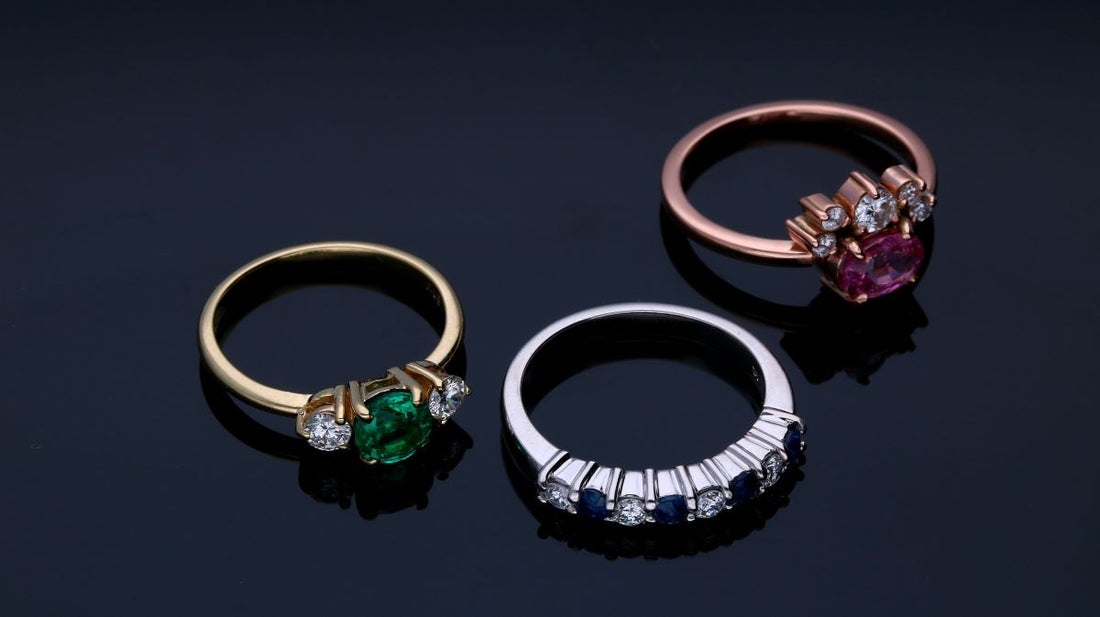
Composite Diamonds: What They Are and How They Differ
Diamonds have long been celebrated for their beauty, rarity, and durability, making them one of the most coveted gemstones in the world. While natural and lab-grown diamonds are widely recognized, composite diamonds are an intriguing alternative gaining attention in the jewelry market. But what exactly are composite diamonds, and how do they differ from traditional diamonds? Let’s explore the fascinating world of composite diamonds.
What Are Composite Diamonds?
Composite diamonds are created by combining two or more smaller diamond pieces to form a larger-looking stone. This process involves bonding natural diamond fragments or lab-grown diamonds using specialized techniques, adhesives, or metal settings. The result is a gemstone that mimics the appearance of a larger single diamond but is made up of multiple smaller parts.
How Composite Diamonds Are Made
The production of composite diamonds involves precision and craftsmanship. Here’s a closer look at how they are made:
- Selection of Diamond Fragments
- Bonding Process
- Polishing and Finishing
Key Differences Between Composite and Traditional Diamonds
Although composite diamonds look like larger single diamonds, they have distinct characteristics that set them apart:
- Cost
- Durability
- Appearance
- Value Retention
- Customization
Advantages of Composite Diamonds
Despite some differences from single diamonds, composite diamonds offer several appealing benefits:
- Budget-Friendly Glamour
- Sustainability
- Variety in Design
Common Settings for Composite Diamonds
Composite diamonds are versatile and can be incorporated into various types of jewelry. Popular settings include:
- Halo Settings
- Cluster Settings
- Illusion Settings
Care and Maintenance
To ensure the longevity of composite diamonds, proper care is essential:
- Regular Cleaning
- Avoid Harsh Chemicals
- Secure Settings
Who Should Choose Composite Diamonds?
Composite diamonds are an excellent choice for those who want the appearance of a larger diamond without the hefty price tag. They are perfect for fashion-forward individuals seeking unique and customizable jewelry designs. However, if durability and long-term value are top priorities, a single diamond might be a better option.
In Conclusion
Composite diamonds are a brilliant innovation in the jewelry world, offering a cost-effective way to enjoy the luxury and sparkle of diamonds. While they differ in construction and value from traditional diamonds, their affordability, sustainability, and design flexibility make them a compelling choice. Whether you’re looking for an engagement ring or a statement piece, composite diamonds allow you to shine bright without breaking the bank.
FAQs About Composite Diamonds: What They Are and How They Differ
What are composite diamonds?
Composite diamonds are gemstones created by bonding two or more smaller diamond pieces to form a larger, cohesive stone. These fragments may consist of natural diamonds, lab-grown diamonds, or both, and are held together using adhesives, settings, or metal frameworks to mimic the appearance of a single large diamond.
How do composite diamonds differ from traditional diamonds?
Composite diamonds are made from multiple diamond fragments, while traditional diamonds are single, solid stones. This difference affects their durability, cost, and value retention. Composite diamonds are more affordable but may be less durable due to the bonding points between fragments.
Are composite diamonds real diamonds?
Yes, composite diamonds are made of real diamond material. However, their construction - multiple pieces bonded together - sets them apart from single, solid diamonds.
Why are composite diamonds more affordable?
Composite diamonds use smaller diamond fragments, which are less expensive than large, high-quality single diamonds. Additionally, the bonding process allows jewelers to create larger-looking stones at a fraction of the cost.
What are the advantages of choosing composite diamonds?
- Affordability: Achieve the look of a large diamond without the high price tag.
- Sustainability: Reduce waste by repurposing diamond fragments.
- Customization: Greater design flexibility for unique and intricate jewelry.
What are the disadvantages of composite diamonds?
- Durability: Bonding areas may be more vulnerable to damage or loosening over time.
- Appearance: Close inspection may reveal the separations between fragments.
- Resale Value: Typically lower than single diamonds of the same size and appearance.
How can I care for composite diamonds?
- Clean gently with warm water, mild soap, and a soft brush.
- Avoid harsh chemicals or abrasive cleaners that may weaken adhesives.
- Periodically check the jewelry setting to ensure the diamond pieces remain secure.
What settings are common for composite diamonds?
- Halo Settings: Small diamonds surround the composite stone for added brilliance.
- Cluster Settings: Diamond fragments are grouped to resemble a single large diamond.
- Illusion Settings: Metal frameworks or reflective bases enhance the diamond’s sparkle and size.
Are composite diamonds suitable for engagement rings?
Yes, composite diamonds can be an excellent choice for engagement rings, especially for those seeking a glamorous look on a budget. However, they may not be ideal for individuals prioritizing long-term durability and resale value.
How can I tell if a diamond is composite?
Examine the stone under magnification. Composite diamonds may show visible separations between fragments or bonding lines. Consulting a jeweler is also a reliable way to confirm.
Who should consider buying composite diamonds?
Composite diamonds are perfect for budget-conscious buyers, those seeking sustainable options, or individuals who value unique and customizable jewelry designs. They are ideal for fashion-forward pieces and special occasions.
Can composite diamonds last a lifetime?
With proper care and maintenance, composite diamonds can last for many years. However, their durability depends on the quality of the bonding and setting. Regular inspections by a jeweler can help maintain their longevity.
























